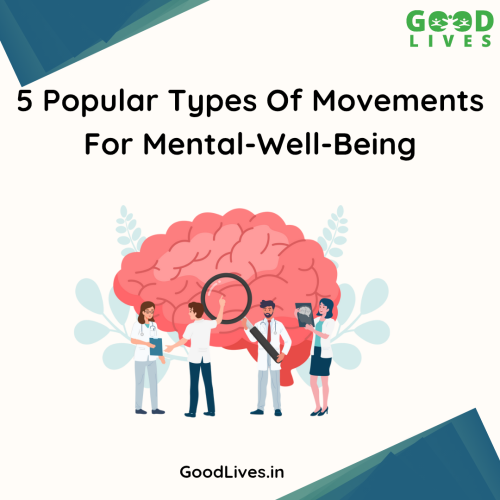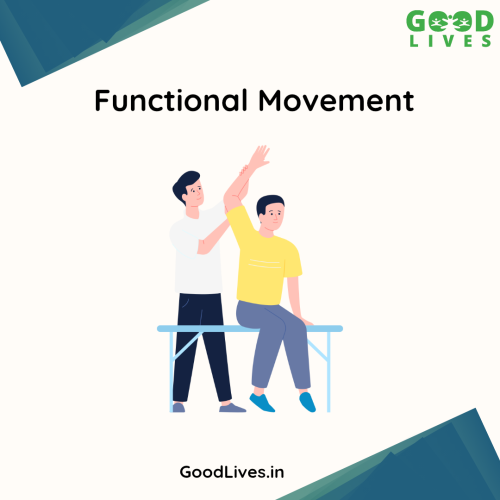
How often do you move in a day? Is it at least for 30 minutes or none?
Movement is not just about physical fitness—it’s a force for mental health. When we say movement, it means moving the body, in any way possible. Be it walking, running, dancing, engaging in calisthenics, and many more activities.
Consistent movement has been proven to enhance mood, decrease stress, and even alleviate anxiety and depression symptoms. With mental health issues on the rise in our world, it’s important to know how various forms of movement influence our minds, and let this be your reminder to move every day, for at least 30 minutes and you can do anything you want.
This blog explores five major types of movement that support mental well-being, helping you find the best way to stay active while improving your mental health.
5 Popular Types of Movements For Mental-Well-Being
1. Aerobic Exercises

Aerobic exercise is any type of cardiovascular conditioning or “cardio.” It can include running, swimming, cycling, brisk walking, etc.
Cardio, or aerobic exercise, is an effective weapon for mental health because it increases heart rate, circulation, and brain function. It releases endorphins, which decrease pain and increase happiness while decreasing cortisol levels to fight stress and anxiety. Cardio strengthens memory, concentration, and learning as well as sleep quality and insomnia reduction.
Aerobic exercises such as jogging and running for a clear mind, swimming for a body relaxant, cycling to release stress, and fast walking for a positive mood are all popular aerobic activities.
Adding them to daily activity lists can significantly enhance emotional stability and general mental well-being.
2. Strength Training

Strength training utilizes one or several muscle groups to accomplish a specific action, e.g., the lifting of weight or squatting.
Strength training, or resistance training, is not only essential for building muscle and improving physical strength but also plays a crucial role in mental well-being. It boosts self-esteem by showing visible progress, reduces symptoms of depression through increased dopamine levels, and enhances focus and discipline by requiring concentration.
Additionally, it helps regulate stress hormones, promoting emotional balance. Common strength training exercises include weightlifting with dumbbells, barbells, or kettlebells; bodyweight exercises like push-ups, squats, and lunges; and resistance band workouts, which are great for beginners or injury recovery.
Incorporating strength training into a routine can significantly enhance mental clarity, resilience, and overall mood, making it a powerful tool for mental and emotional well-being.
3. Mindful Movement

Mindful movement enables us to tune in to our bodies and get moving in a manner that can assist us in reducing stress, releasing stuck energy, and building our mind-body connection.
It strengthens the connection between the mind and body, promoting relaxation, reducing stress, and enhancing overall well-being. Encouraging deep breathing, concentration, and intentional movement, helps lower cortisol levels, reducing anxiety while improving emotional regulation and mindfulness. Mindful Movement interventions have already been shown to alleviate symptoms of various clinical conditions and induce measurable changes in physiological markers of stress, cognitive functions, and sensory motor acuity.
It also enhances body awareness, building a deeper understanding of physical and emotional states. Popular forms of mindful movement include yoga, which combines action, breathwork, and meditation for mental balance; Tai Chi, a slow, flowing martial art that relieves stress and improves coordination; and Pilates, which emphasizes controlled action to enhance posture and release tension.
Incorporating mindful movement into daily routines can cultivate inner peace, resilience, and a more balanced mental state.
4. Functional Movement

Functional movement involves exercises that mimic daily activities, enhancing mobility, reducing injury risk, and promoting mental resilience. Many individuals go to the gym for their daily dose of functional movement.
Strengthening essential muscles, creates independence, making everyday tasks easier while improving coordination and balance. These movements enhance mind-body awareness, reducing stress and boosting confidence.
Common functional exercises include squats for leg strength and mobility, lunges for balance, push-ups for upper body and core stability, and mobility drills to improve flexibility and range of motion. Incorporating functional movement into a routine not only enhances physical capability but also supports mental well-being by promoting a sense of control, stability, and overall vitality.
5. Outdoor and Recreational Activities

Spending time outdoors and engaging in recreational activities can significantly enhance mental well-being by combining movement with the therapeutic effects of nature. Fresh air and natural light boost mood, creativity, and cognitive function, while activities like hiking, dancing, and team sports encourage social interaction and emotional support. Outdoor movement helps reduce stress, lower symptoms of depression, and improve overall outlook.
Hiking offers both physical exercise and relaxation, dancing provides an expressive outlet for joy, playing sports fosters social bonding, and gardening enhances focus while easing anxiety. Incorporating outdoor activities into daily life promotes emotional balance, mental clarity, and a deeper connection to both nature and oneself.
At the end of the day, it isn’t just about fitness—it’s about feeling good, inside and out. After a good Zumba session or a cycling sash, you will feel the difference. When you stay active, your mind will feel clear, your mood will be lighter, and stress won’t weigh you down as much. Whether it’s a morning walk, lifting some weights, flowing through yoga, or just dancing around the house, the motion has a way of bringing joy and balance.
Whether it’s yoga, walking, or mindful stretching, the GoodLives App brings movement to your fingertips. With daily yoga sessions, step challenges, and guided meditations, it makes mental and physical wellness a part of your everyday routine — wherever you are, whenever you need it.
You don’t have to be an athlete—just find what makes you feel alive and do it often. Your mind will thank you, and so will your future self. Keep moving, keep growing!
If you are going through something and need help, try consulting a mental health professional today!
0 Comments